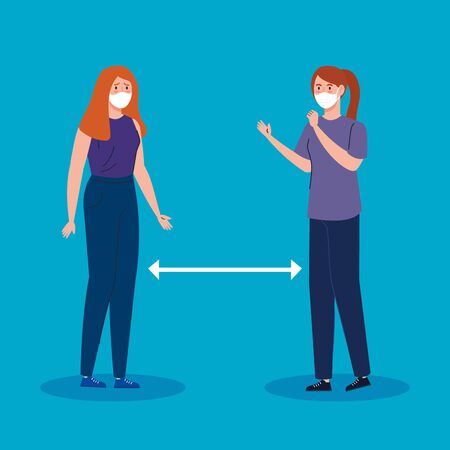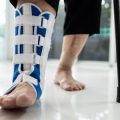Introduction to Personalised Rehabilitation in the UK
Personalised rehabilitation is rapidly reshaping the landscape of healthcare delivery across the United Kingdom, offering a more patient-centred approach to recovery and long-term wellbeing. Traditionally, rehabilitation programmes have often followed a standardised path, but recent advancements in technology are driving a significant shift towards more tailored care. With the advent of wearable devices and health-focused mobile applications, clinicians now have access to real-time data that captures individual progress, activity levels, and specific needs. This wealth of information allows healthcare professionals to design highly customised rehabilitation plans, ensuring that therapy is not only evidence-based but also uniquely suited to each patient’s lifestyle and goals. The integration of these digital tools into everyday practice marks a new era for rehabilitation services in the UK, enhancing patient engagement, improving outcomes, and enabling more proactive management of health conditions. As both NHS and private providers embrace these innovations, patients across the country are experiencing greater empowerment and support throughout their recovery journeys.
2. The Role of Wearables and Health Apps
In recent years, wearable technology and health applications have become essential tools in the UK’s approach to personalised rehabilitation. Both patients and clinicians are increasingly relying on these innovations to support recovery, monitor progress, and tailor therapy according to individual needs. The integration of digital devices into healthcare not only empowers patients but also provides clinicians with accurate, real-time data, enhancing the quality of care delivered within the NHS and private settings.
Common Types of Wearable Devices Used in Rehabilitation
Wearable devices come in various forms, each designed to monitor specific health parameters or aid particular aspects of rehabilitation. Below is a table highlighting some popular devices used across the UK:
| Device Type | Main Features | Typical Use in Rehabilitation |
|---|---|---|
| Fitness Trackers (e.g., Fitbit, Garmin) | Tracks steps, heart rate, sleep patterns | Encourages physical activity; monitors cardiovascular health during rehab |
| Smartwatches (e.g., Apple Watch, Samsung Galaxy Watch) | Activity tracking, ECG monitoring, fall detection | Assists stroke and cardiac rehab; detects irregularities and falls in elderly patients |
| Medical-Grade Sensors (e.g., BioPatch, FreeStyle Libre) | Continuous glucose monitoring, ECG, respiratory rate measurement | Supports diabetes management; monitors heart conditions post-surgery |
| Movement Sensors (e.g., Axivity AX3, Gait Up) | Gait analysis, posture monitoring, movement tracking | Aids orthopaedic and neurological rehabilitation by analysing mobility patterns |
Popular Health Apps for Personalised Therapy
Mobile applications complement wearables by offering platforms for education, exercise guidance, symptom tracking, and remote consultations. Here are some widely used apps among UK patients and clinicians:
| App Name | Main Functionality | User Group |
|---|---|---|
| NHS App | Health records access, appointment booking, prescription management | NHS patients seeking integrated digital care |
| myRehab® UK | Bespoke exercise plans with video demonstrations; progress tracking; clinician messaging | Patients undergoing physiotherapy or occupational therapy programmes |
| SystmOnline / Patient Access | Book appointments; review medical records; order repeat prescriptions online | NHS patients managing ongoing rehabilitation remotely |
| Kinetic Revolution Running Rehab App | Running gait analysis; injury prevention exercises; rehab plans tailored to runners’ needs | Athletes recovering from lower limb injuries or surgery in the UK context |
| Couch to 5K (NHS-endorsed) | Gradual running programme for beginners; audio coaching; progress monitoring | Individuals rehabilitating from sedentary lifestyles or cardiac events under clinical supervision |
The Integration of Wearables and Apps in Clinical Practice
The collaborative use of wearables and health apps allows for more precise adjustments to rehabilitation programmes. Data collected can be seamlessly shared between patients and their multidisciplinary teams—physiotherapists, occupational therapists, GPs—enabling evidence-based decisions that reflect real-world activity levels and recovery milestones. As digital literacy increases across all age groups in the UK, these tools are making personalised rehabilitation more accessible and efficient than ever before.

3. Collecting and Interpreting Patient Data
Wearables and health apps are revolutionising the way rehabilitation is delivered in the UK by capturing a wealth of personalised data. These technologies typically collect information such as heart rate, step count, sleep quality, physical activity levels, and even adherence to prescribed exercises. Some advanced wearables can also monitor joint movement or detect subtle changes in gait, offering a comprehensive picture of a patient’s daily function.
Healthcare professionals play a pivotal role in making sense of this data. With access to real-time insights, physiotherapists and occupational therapists can identify patterns and trends that may not be evident during routine clinic visits. For example, if a patient’s wearable shows a decline in daily activity or poor sleep over several days, it may signal pain flare-ups or reduced motivation—prompting timely intervention.
In the context of the NHS and private practice across the UK, clinicians use secure digital platforms to analyse these metrics collectively. By reviewing both quantitative (like step count) and qualitative data (such as patient-reported pain levels via app check-ins), they gain a holistic understanding of each individual’s progress. This personalised approach ensures therapy is adapted not only to medical needs but also to lifestyle factors, work schedules, and personal goals.
The ultimate aim is to move beyond one-size-fits-all programmes. By interpreting data from wearables and apps, healthcare teams can adjust exercise intensity, recommend new activities, or provide motivational feedback in response to each patient’s unique journey—helping them achieve better outcomes and sustain healthy habits in their everyday lives.
4. Tailoring Rehabilitation Plans Using Data
In the UK, rehabilitation specialists are increasingly harnessing data from wearables and mobile apps to deliver truly personalised therapy. This approach moves beyond traditional one-size-fits-all programmes, allowing therapists to develop bespoke regimes that reflect each patient’s unique needs and lifestyle. By analysing real-time activity metrics, sleep quality, mobility patterns, and even mood tracking, clinicians can make informed decisions that enhance both engagement and recovery outcomes.
How Therapists Use Data-Driven Insights
Wearable devices such as fitness trackers, smartwatches, and specialised rehabilitation sensors provide a wealth of information on a patient’s daily routines and progress. Mobile apps complement this by collecting self-reported symptoms, pain levels, and adherence to prescribed exercises. Therapists in the NHS and private practice use secure platforms to review these insights regularly, adjusting therapy plans based on tangible evidence rather than assumptions or sporadic check-ins.
Benefits of Data-Driven Personalisation
| Aspect | Traditional Approach | Data-Driven Approach |
|---|---|---|
| Assessment Frequency | Sporadic clinic visits | Continuous remote monitoring |
| Therapy Adjustments | Generalised updates | Bespoke modifications based on actual progress |
| Patient Engagement | Passive participation | Active involvement via feedback and goal tracking |
| Recovery Outcomes | Variable results | Improved consistency and faster progress |
Enhancing Patient Motivation and Collaboration
The tailored nature of these rehabilitation plans means patients see their own data translated into meaningful goals—such as increasing step counts, improving sleep quality, or reducing pain episodes. This transparency fosters a collaborative relationship between patients and therapists. Many UK-based clinics now encourage patients to regularly review their progress using app dashboards or printouts during appointments, further reinforcing motivation and accountability.
This data-led personalisation not only empowers individuals but also helps therapists intervene earlier if setbacks occur. With bespoke rehabilitation at its core, this approach is redefining how recovery journeys are managed across the UK healthcare landscape.
5. Benefits and Challenges in the UK Context
Personalised rehabilitation, enhanced by data from wearables and apps, holds significant promise for the UK’s healthcare system. By harnessing real-time data, clinicians can develop highly tailored therapy plans that reflect each patient’s progress and unique needs. This approach supports the NHS’s commitment to patient-centred care and can help reduce waiting times by enabling more efficient remote monitoring and self-management.
Advantages of Tech-Enabled Personalisation
One major benefit is improved engagement: British patients using familiar technology often feel more involved in their own recovery journey. Wearables and digital health apps provide immediate feedback, motivating individuals to stick with prescribed exercises or activity levels. For clinicians, access to continuous streams of objective data allows for timely interventions, better outcome tracking, and adjustments based on evidence rather than memory or sporadic check-ins.
Supporting National Health Priorities
Tech-enabled personalisation aligns well with NHS priorities such as reducing hospital admissions, supporting integrated care pathways, and promoting preventative health measures. By empowering patients to manage their conditions at home—supported by regular digital check-ins—there is potential for cost savings and improved long-term outcomes across diverse communities throughout England, Scotland, Wales, and Northern Ireland.
Challenges: Privacy, Security, and Digital Inclusion
Despite these advantages, several challenges remain in the UK context. Protecting patient privacy is paramount; all data collected from wearables must comply with the UK GDPR and NHS Digital standards. Patients may be understandably concerned about how their sensitive information is stored, shared, or potentially misused. Additionally, robust cybersecurity measures are essential to prevent breaches that could undermine trust in digital health tools.
Addressing the Digital Divide
Another key challenge is digital inclusion. Not all individuals across the UK have equal access to smartphones, reliable internet connectivity, or the confidence to use new technologies. This “digital divide” can exacerbate health inequalities if not proactively addressed through training, support schemes, or provision of devices for those most at risk of exclusion.
Looking Forward
While personalised rehabilitation powered by wearable data offers exciting opportunities for British healthcare, careful attention must be paid to ethical implementation. Balancing innovation with inclusivity and privacy will ensure these solutions truly benefit all patients across the United Kingdom.
6. Looking Ahead: The Future of Data-Driven Rehabilitation
As we look to the future, the landscape of personalised rehabilitation in the UK is set to become even more dynamic and responsive, thanks to continued advancements in wearable technology and digital health apps. With the NHS and private healthcare providers increasingly embracing digital transformation, there is real potential for further integration of data-driven approaches into everyday therapy. By harnessing artificial intelligence and machine learning, clinicians will soon be able to analyse vast streams of patient-generated data, identifying subtle patterns that can inform truly bespoke treatment plans.
In addition, collaboration between technology companies, healthcare professionals, and patient advocacy groups will help ensure that new innovations are both clinically effective and user-friendly. As more Britons become comfortable with sharing health data securely, patients themselves will gain greater agency over their rehabilitation journeys, participating actively in decisions about their care. This shift towards co-produced healthcare supports not only better outcomes but also a sense of empowerment and partnership between patients and clinicians.
Looking further ahead, the use of virtual reality (VR) and augmented reality (AR) could revolutionise rehabilitation by creating immersive environments for physical and cognitive therapies. These tools, combined with real-time feedback from wearables, may offer highly engaging ways to motivate patients and track progress in detail. For those living in remote or rural areas of the UK, tele-rehabilitation powered by robust digital platforms promises to make high-quality personalised care accessible regardless of location.
The future also brings important questions around data privacy and equitable access to technology. It will be essential for policymakers and service providers to address these concerns proactively, ensuring that all individuals—regardless of age, background, or ability—can benefit from advances in personalised rehabilitation. By prioritising security standards, clear consent processes, and ongoing education for both patients and professionals, we can build trust in digital health solutions across the UK.
Ultimately, the ongoing evolution of data-driven rehabilitation holds great promise for improving recovery times, enhancing quality of life, and supporting long-term independence for people facing injury or chronic illness. With a thoughtful approach to innovation and a steadfast commitment to person-centred care, the UK is well-positioned to lead the way in transforming rehabilitation for generations to come.


